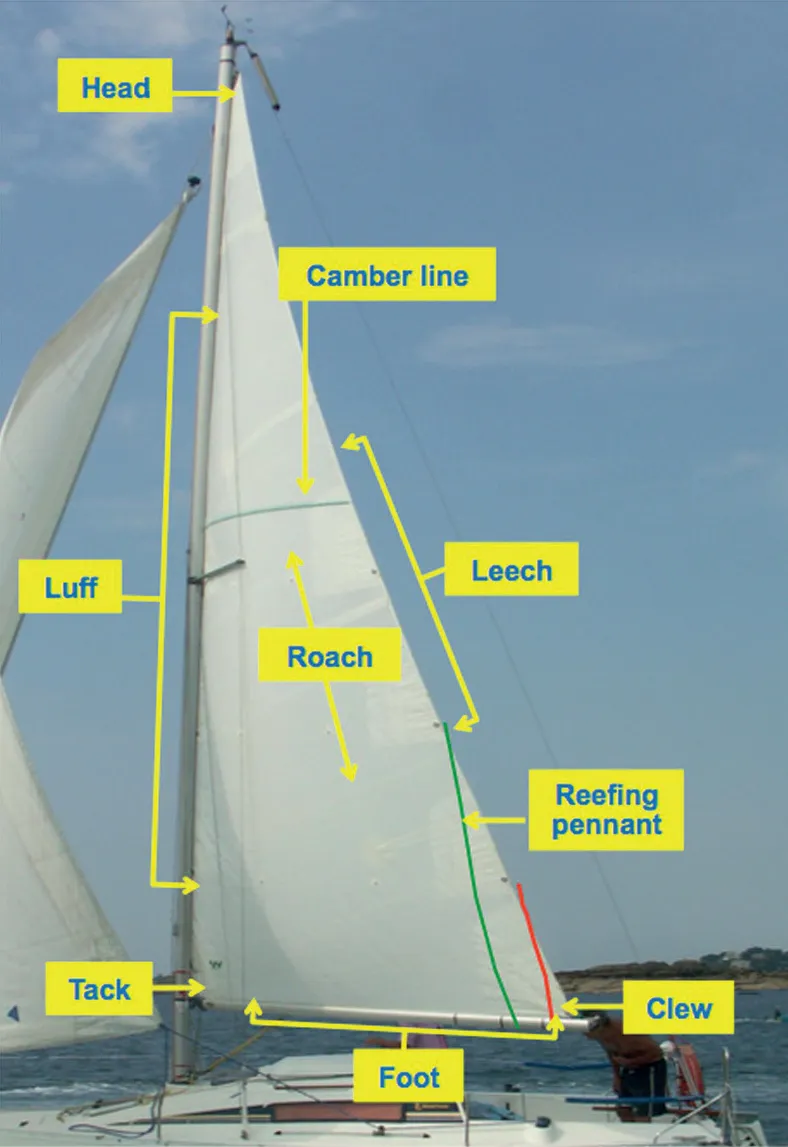![]()
1About Boats – Sail and Power
Enthusiasts who decide to take to the water will probably have first visited a boat show and enjoyed its gloss and hype or wandered down to the harbour when on holiday and chatted to the owners of boats secured to the quay. Either way they quickly realise that boats come in all shapes and sizes and are powered by different means, and that the sea has a language of its own!
This chapter doesn’t aim to replace the nautical dictionary – this quick introduction will give the basics while the rest of the book, and some time on the water, will fill in the gaps. To begin with, you need enough knowledge to know what to look for at the yacht broker, or when you embark on your first cruising course.
Nautical Terms
Directions
All boats, whether powered by engine or sail, are affected by the wind. Motor cruisers often have high superstructure supporting the upper steering position and are liable to be affected by the wind, particularly when manoeuvring at slow speed. Sailing yachts use the wind to drive them forward but are also pushed sideways – making leeway – when heeled over by the wind.
The upwind side of the boat is called the windward side and the sheltered side is the leeward side (pronounced ‘loo-erd’).
The widest part of the boat is called the beam, so an object sighted at right angles to the boat on the right-hand side would be described as being on the starboard beam.
FIG 1.1 An object seen behind the boat is described as being astern or aft.
When looking ahead, the left-hand side of the boat is the port side, and Figure 1.1 shows that side shaded red – the colour of the port navigation light. A quick memory jogger is to remember that port wine is red.
FIG 1.2 Just a few of the more important boat parts.
Parts of a Sailing Yacht
Foresail furling system In Figure 1.2 the inset photograph shows that the foresail is furled around the wire that supports the mast at the bow (the forestay). The line used for furling and unfurling the sail is rolled around the black metal drum on the bow and is controlled from the safety of the cockpit, making it convenient for cruising and shorthanded sailing.
Fairlead Ropes which secure the yacht to the shore are led through the fairlead (inset in Figure 1.2) so that the ropes are not chafed by sharp metal edges.
Bow roller The bow roller is used to lead the anchor chain or anchor rope (called a warp) safely into the boat over the bow. The metal bar on the roller slides sideways to allow the chain to be laid on the roller, and is then slid back above the chain to prevent the chain jumping off the bracket.
Winches See Chapter 2.
Parts of a sail
These are shown in Figure 1.3.
Both the mainsail and the foresail are hoisted by halyards. The mainsail is hoisted by the main halyard and the foresail by the genoa or jib halyard.
The reefing pennants, which are used to decrease the size of the sail when the wind is strong, pass through small metal rings set into the sail. These rings are called cringles.
The sails are hoisted when the boat is heading into – or almost into – wind, so that they are empty of wind and therefore easy to manage.
Types of Hull and Keel for Sailboats
Short keel and balanced rudder
The 10-metre cruiser-racer in Figure 1.2 has a short-fin keel with a relatively deep draught (measurement from the waterline to the bottom of the keel) and a large rudder which is unsupported at the bottom. This keel and rudder configuration produces a boat that is lively, responsive and fast, but makes hard work for the crew, who will need to trim the sails frequently to keep her in check. The short keel will give a tight turning circle and allow her to go astern under power easily, but she will be difficult to berth in a marina in any sort of blow as she will get blown off line easily. A fun boat, but probably not the one to choose if going into Southern Ocean weather....



